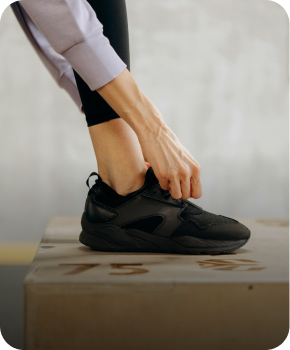Ankle twists and frequent foot twisting are common issues for many, ranging from the casual walker to the avid athlete. These incidents not only cause immediate pain and discomfort but can also lead to long-term joint instability and recurring injuries. Fortunately, insoles are an effective solution that can provide substantial support and prevent such mishaps. This article delves into how custom-made insoles can help stabilise your steps and keep ankle twists at bay.
Understanding Ankle Twists
An ankle twist occurs when the foot is awkwardly turned, stretching or tearing the ligaments around the ankle. This is often the result of poor foot alignment or lack of adequate support from footwear, especially during activities that involve dynamic movements like sports, running, or even just walking on uneven surfaces.
The Role of Insoles in Preventing Ankle Twists
Insoles play a crucial role in preventing ankle injuries by improving foot mechanics and support. Here’s how they help:
1. Enhanced Stability: Insoles provide a stable base that supports the arch and helps maintain proper alignment of the foot and ankle. This reduces the risk of the foot turning inward or outward, which can lead to twists.
2. Improved Foot Alignment: By ensuring that feet are properly aligned within the shoes, insoles prevent the uneven distribution of weight and incorrect foot positioning, common causes of ankle twists.
3. Shock Absorption: Quality insoles absorb the impact on the feet during walking or running, which lessens the stress on the ankle and reduces the likelihood of twisting.
4. Corrective Support: For those with pronation issues or imbalances in their stride, insoles can offer corrective support, adjusting how the foot strikes the ground and thereby reducing strain on the ankle.
How to Choose the Right Insoles for Ankle Support
Selecting the right insoles is crucial for maximising their benefits in preventing ankle twists. Consider the following factors when choosing insoles:
– Arch Type and Support Needs: Identify your arch type (low, medium, high) and choose an insole that offers appropriate support for that arch. This personalisation helps in maintaining proper foot alignment.
– Material and Design: Look for insoles made from materials that provide both cushioning and stability. A good insole should have a firm arch support and a cushioned heel to absorb shocks effectively.
– Fit and Comfort: Ensure the insoles fit well in your shoes without causing tightness or discomfort. A proper fit is essential for the insoles to function correctly and offer the best protection against ankle twists.
Conclusion
Insoles are more than just foot comfort accessories; they are vital tools for preventing injuries such as ankle twists. By providing enhanced stability, proper alignment, and shock absorption, insoles can significantly reduce the risk of twisting injuries. Whether you’re an athlete, a professional on your feet all day, or someone looking for extra support to prevent injuries, incorporating custom insoles into your footwear regime can provide the stability and protection your ankles need to keep you moving safely and effectively.



